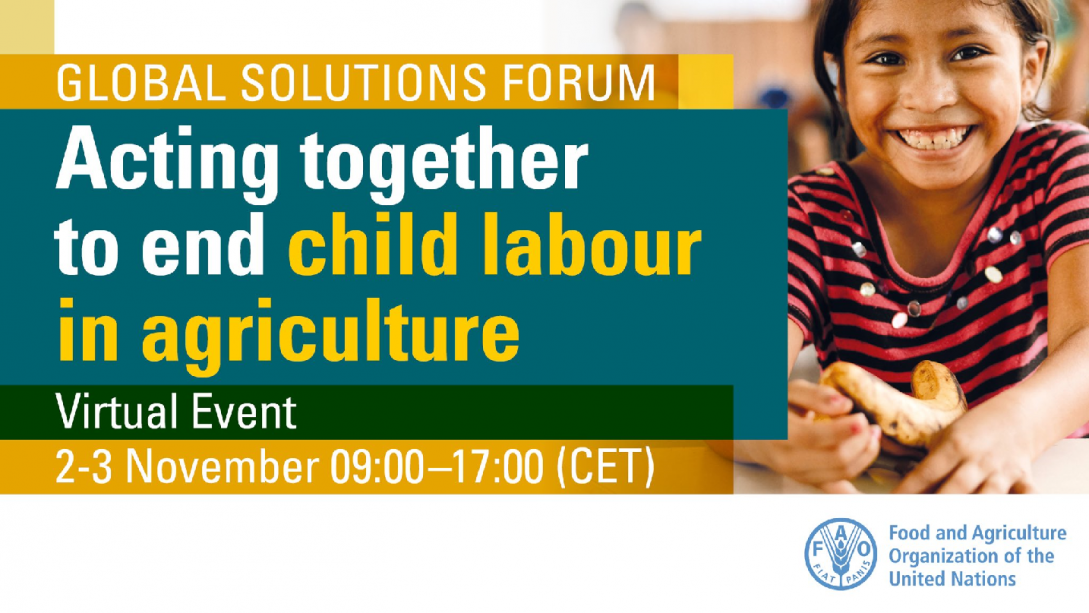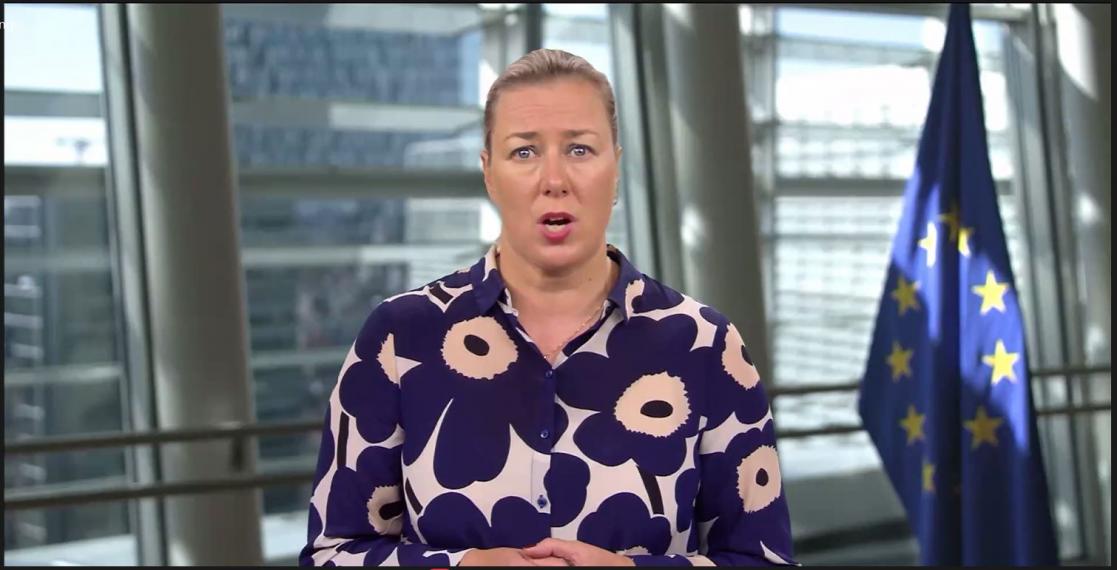Acting together to end child labour in agriculture

If we want to eliminate child labour by 2025 as we committed through the Sustainable Development Goals, we must collectively foster change in the agricultural sector, which is the largest source of child labour, said European Commissioner for International Partnerships Jutta Urpilainen at the high-level Global Solutions Forum. The forum organised by the United Nations’ Food and Agriculture Organization (FAO) takes place virtually on 2-3 November 2021.
The European Union is working to end child labour especially in agriculture, as child labour perpetuates poverty across generations, preventing children to have access to quality education and better prospects for their future.
Speaking at the opening session of the high-level Global Solutions Forum, the Commissioner laid out the EU’s approach to tackle this complex issue:
- working hand in hand with governments in our partner countries on eliminating child labour from key supply chains, such as cocoa and cotton;
- working together with stakeholders, including representatives from the private sector, civil society and trade unions;
- acting on prevention measures of child labour by supporting access to quality education;
- involving children and youth in addressing child labour.
Among many EU initiatives on child labour in partner countries, the Commissioner highlighted: “The EU will adopt a new Sustainable Corporate Governance proposal by year-end. It will require EU operators to perform due diligence to address human rights and environmental risks in their supply chains. It will go a long way towards preventing child labour.”
Concerted efforts bring results. For example, through the CLEAR Cotton project, the EU is collaborating with the International Labour Organization (ILO) and FAO to eliminate child labour in the cotton, textile and garment value chains. By working together with multiple stakeholders, the project has already removed 4 000 children from working in cotton fields. These children went back to special schools, while older children received job training.
Another example is the multi-stakeholder Sustainable Cocoa Initiative, which aims to remove child labour through fair living income for producers. The EU’s €25 million contribution supports better smallholder’s livelihoods, zero deforestation and zero child labour in the cocoa value chain, all at the same time, in Côte d'Ivoire, Ghana and Cameroon.
Watch the Commissioner’s video message:

Background
This year is the International Year for the Elimination of Child Labour. It calls on all of us to raise awareness of the importance of ending child labour and to step up our collective efforts for impactful and sustainable actions.
The Global Solutions Forum is organised by the FAO with the collaboration of the ILO, and in partnership with the International Partnership for Cooperation on Child Labour in Agriculture.
The event brings together all those who must work together to end child labour in agriculture: representatives of ministries of agriculture, fisheries, livestock and forestry; producers’ and farmers’ organisations; workers‘ associations, development banks, businesses, civil society and academia; children, former child labourers, and youth advocates, among others.
Participants share solutions to prevent child labour in agriculture and accelerate concerted actions towards meeting the Sustainable Development Goal Target 8.7 that seeks to eliminate all forms of child labour by 2025.
There is much to be done. Child labour is on the rise for the first time in 20 years, and millions of children are at risk due to the impacts of the COVID-19 pandemic, as reported in the new Child Labour: Global estimates 2020, trends and the road forward.
The pandemic, in addition to other crises, has caused an unprecedented decline in economic activity and jobs all over the world, hitting agriculture and food systems hard and increasing the risk of pushing more children into child labour.
The largest share of child labour remains in agriculture, with 112 million children in total – 70% of all child labour. If the world is to end child labour and achieve the Sustainable Development Goal target, it requires a strong commitment as well as the involvement of agricultural stakeholders and their partners.
Sustainable Cocoa Initiative
In July 2019, Côte d'Ivoire and Ghana on one side, industry on the other side agreed to create a Living Income Differential, a premium to pay on top of the market price for cocoa, to improve the livelihoods of cocoa farmers. On the occasion of this historic agreement on cocoa prices, the EU launched a policy dialogue with both countries to address poverty, deforestation and child labour in the cocoa value chain simultaneously. By acting as an honest broker, the EU aims to help create space for a consensus between producer countries and industry, between cocoa smallholders and European consumers. The first €25 million EU programme is supporting the policy dialogue launched in both countries on these issues. Cameroon will benefit as well from this programme.
More Information
International Year for the Elimination of Child Labour
To eradicate child labour we must focus our attention on agriculture (INTPA web article)
EU Strategy on the Rights of the Child
EU multi-stakeholder dialogue for sustainable cocoa
CLEAR Cotton
EU Sustainable Corporate Governance proposal




